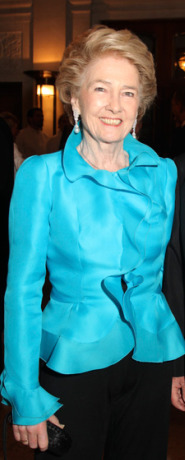Emails went unanswered, phone calls unreturned. Business had ground to a halt.
 That’s pretty much how Chelsea dealer Casey Kaplan (right) described the atmosphere in New York’s gallery world in recent months, as he said last night (at a press reception) what he, and a group of 49 other contemporary art galleries and seven non-profit groups, plan to do about it: Start New York Gallery Week.
That’s pretty much how Chelsea dealer Casey Kaplan (right) described the atmosphere in New York’s gallery world in recent months, as he said last night (at a press reception) what he, and a group of 49 other contemporary art galleries and seven non-profit groups, plan to do about it: Start New York Gallery Week.
It’s not really a week — just Friday, May 7, through Monday, May 10, set just before the big contemporary auction sales at Christie’s (May 11) and Sotheby’s (May12). But it is an attempt to create some excitement. Some galleries will stay open on Friday night and some will stay open on Monday night; they’ll all be open on Sunday. Inside, they’ll mount solo shows and there will be plenty of events in the galleries. Artists themselves will not only give talks, but gallery tours. (Curators, art historians, etc. will also do some of the honors.)
As Kaplan said, big-time collectors often meet artists, this is an opportunity for others to do so.
There’ll be panel discussions, etc. too. A list of the participating galleries and the artists they plan to show is in the press release. The non-profits include White Columns, The Drawing Center and Artists Space.
The organizers have of course created a website, which also lists the participating galleries. Some events have been posted (click on the date!), and more is to come. They’ve reached out to hotels, restaurants and tourism groups to help program and promote. They’ve got a FaceBook page.
I’m all for it. Yes, the art circuit gets tiring sometimes — one can’t possibly do it all — but events like this draw in new people, who may go for the “happening” part and end up getting hooked on the art.
Mark your calendars.

 “Tell me a story.” Research shows that stories can be life-shaping.
“Tell me a story.” Research shows that stories can be life-shaping. 
 Last fall, FRAME announced the appointment of Edmund “Ted” Pillsbury to the job, succeeding art historian and curator Richard R. Brettell. But, as I wrote for the April issue of
Last fall, FRAME announced the appointment of Edmund “Ted” Pillsbury to the job, succeeding art historian and curator Richard R. Brettell. But, as I wrote for the April issue of  I like Anish Kapoor’s work; most of it anyway. But when I saw the design and the cost of the ArcelorMittal Orbital (left) that will go up in London for the Olympics, at a cost of £19.1, which is about $29 million, I paused. That’s a lot of money even if London Mayor Boris Johnson thankfully got billionaire Lakshmi Mittal to pony up £16 million of it.
I like Anish Kapoor’s work; most of it anyway. But when I saw the design and the cost of the ArcelorMittal Orbital (left) that will go up in London for the Olympics, at a cost of £19.1, which is about $29 million, I paused. That’s a lot of money even if London Mayor Boris Johnson thankfully got billionaire Lakshmi Mittal to pony up £16 million of it.  Photo Credits: Courtesy ARUP (top)
Photo Credits: Courtesy ARUP (top)